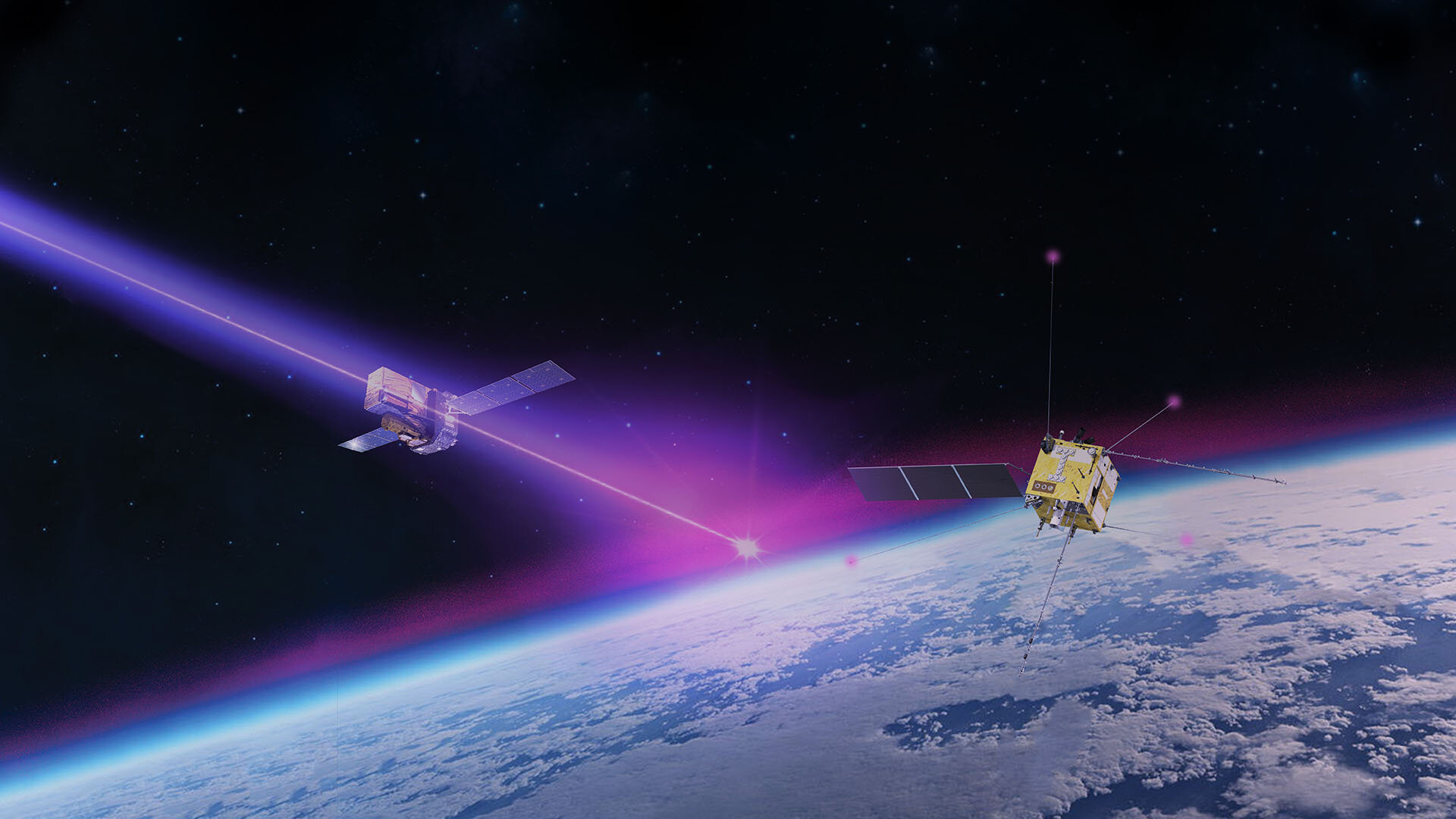Blog Credit: Trupti Thakur
Image Courtesy: Google
600th Gama Ray Burst
India’s AstroSat space telescope has achieved a significant milestone by detecting more than 600 Gamma-Ray Burst (GRB), each marking the death of a massive star or merging of neutron stars. “The detection of the 600th GRB is a great demonstration of the continued undiminished performance of Cadmium Zinc Telluride Imager (CZTI) eight years after launch, and well after its design lifetime,” Dipankar Bhattacharya, the principal investigator for CZTI, said.
Dubbed as mini big-bangs, GRBs are the most energetic explosions in the universe, emitting more energy in seconds than the sun will emit in its entire lifetime, Gaurav Waratkar, a Ph.D student at IIT Bombay, who leads the study of GRBs with AstroSat, told PTI.
GRBs last from a fraction of a second to several minutes, and are accompanied by the birth of a black hole.
India’s AstroSat space telescope has reached a significant milestone by detecting its 600th Gamma-Ray Burst (GRB), showcasing the sustained performance of its Cadmium Zinc Telluride Imager (CZTI) eight years post-launch. Gamma-Ray Bursts, representing the demise of massive stars or neutron star mergers, pack an immense amount of energy, often surpassing the sun’s total lifetime emissions in a matter of seconds.
Undiminished Performance of CZTI
Dipankar Bhattacharya, the principal investigator for CZTI, expressed satisfaction with the continued excellent performance of the instrument. “The detection of the 600th GRB is a great demonstration of the continued undiminished performance of Cadmium Zinc Telluride Imager (CZTI) eight years after launch, and well after its design lifetime,” Bhattacharya stated.
Gamma-Ray Bursts: Cosmic Fireworks
GRBs release an extraordinary amount of energy, earning them the nickname “mini big-bangs.” They can last from a fraction of a second to several minutes, and their occurrence is associated with either the death of massive stars or the merger of neutron stars. These cosmic fireworks emit energy comparable to the sun’s entire lifetime output.
AstroSat’s Ongoing Contributions
Launched by the Indian Space Research Organisation (ISRO) in 2015, AstroSat was initially designed for a five-year mission. However, it has exceeded expectations and is still operational, making valuable observations. AstroSat is India’s first dedicated multi-wavelength space observatory, equipped with a suite of payloads allowing simultaneous observations across various wavelengths, from ultraviolet to X-rays.
Observation of the 600th GRB
The CZTI detector on AstroSat observed the 600th GRB on November 22. The observation data has been shared with astronomers and researchers worldwide, offering insights for their studies. Gaurav Waratkar, a PhD student at IIT Bombay leading the study of GRBs with AstroSat, expressed excitement about examining data from explosions that occurred billions of years ago.
More About Gama Rays Burst: In gamma-ray astronomy, gamma-ray bursts (GRBs) are immensely energetic explosions that have been observed in distant galaxies, described by NASA as “the most powerful class of explosions in the universe”.[1] They are the most energetic and luminous electromagnetic events since the Big Bang. Bursts can last from ten milliseconds to several hours. After an initial flash of gamma rays, a longer-lived “afterglow” is usually emitted at longer wavelengths (X-ray, ultraviolet, optical, infrared, microwave and radio).
The intense radiation of most observed GRBs is thought to be released during a supernova or superluminous supernova as a high-mass star implodes to form a neutron star or a black hole. A subclass of GRBs appears to originate from the merger of binary neutron stars.
The sources of most GRBs are billions of light years away from Earth, implying that the explosions are both extremely energetic (a typical burst releases as much energy in a few seconds as the Sun will in its entire 10-billion-year lifetime) and extremely rare (a few per galaxy per million years). All observed GRBs have originated from outside the Milky Way galaxy, although a related class of phenomena, soft gamma repeaters, are associated with magnetars within the Milky Way. It has been hypothesized that a gamma-ray burst in the Milky Way, pointing directly towards the Earth, could cause a mass extinction event. The Late Ordovician mass extinction has been hypothesised by some researchers to have occurred as a result of such a gamma-ray burst.
GRBs were first detected in 1967 by the Vela satellites, which had been designed to detect covert nuclear weapons tests; after thorough analysis, this was published in 1973. Following their discovery, hundreds of theoretical models were proposed to explain these bursts, such as collisions between comets and neutron stars. Little information was available to verify these models until the 1997 detection of the first X-ray and optical afterglows and direct measurement of their redshifts using optical spectroscopy, and thus their distances and energy outputs. These discoveries, and subsequent studies of the galaxies and supernovae associated with the bursts, clarified the distance and luminosity of GRBs, definitively placing them in distant galaxies.
History
Positions on the sky of all gamma-ray bursts detected during the BATSE mission. The distribution is isotropic, with no concentration towards the plane of the Milky Way, which runs horizontally through the center of the image.
Gamma-ray bursts were first observed in the late 1960s by the U.S. Vela satellites, which were built to detect gamma radiation pulses emitted by nuclear weapons tested in space. The United States suspected that the Soviet Union might attempt to conduct secret nuclear tests after signing the Nuclear Test Ban Treaty in 1963. On July 2, 1967, at 14:19 UTC, the Vela 4 and Vela 3 satellites detected a flash of gamma radiation unlike any known nuclear weapons signature. Uncertain what had happened but not considering the matter particularly urgent, the team at the Los Alamos National Laboratory, led by Ray Klebesadel, filed the data away for investigation. As additional Vela satellites were launched with better instruments, the Los Alamos team continued to find inexplicable gamma-ray bursts in their data. By analyzing the different arrival times of the bursts as detected by different satellites, the team was able to determine rough estimates for the sky positions of 16 bursts and definitively rule out a terrestrial or solar origin. Contrary to popular belief, the data was never classified. After thorough analysis, the findings were published in 1973 as an Astrophysical Journal article entitled “Observations of Gamma-Ray Bursts of Cosmic Origin”.
Most early theories of gamma-ray bursts posited nearby sources within the Milky Way Galaxy. From 1991, the Compton Gamma Ray Observatory (CGRO) and its Burst and Transient Source Explorer (BATSE) instrument, an extremely sensitive gamma-ray detector, provided data that showed the distribution of GRBs is isotropic – not biased towards any particular direction in space. If the sources were from within our own galaxy, they would be strongly concentrated in or near the galactic plane. The absence of any such pattern in the case of GRBs provided strong evidence that gamma-ray bursts must come from beyond the Milky Way. However, some Milky Way models are still consistent with an isotropic distribution.
Counterpart objects as candidate sources
For decades after the discovery of GRBs, astronomers searched for a counterpart at other wavelengths: i.e., any astronomical object in positional coincidence with a recently observed burst. Astronomers considered many distinct classes of objects, including white dwarfs, pulsars, supernovae, globular clusters, quasars, Seyfert galaxies, and BL Lac objects. All such searches were unsuccessful, and in a few cases particularly well-localized bursts (those whose positions were determined with what was then a high degree of accuracy) could be clearly shown to have no bright objects of any nature consistent with the position derived from the detecting satellites. This suggested an origin of either very faint stars or extremely distant galaxies. Even the most accurate positions contained numerous faint stars and galaxies, and it was widely agreed that final resolution of the origins of cosmic gamma-ray bursts would require both new satellites and faster communication.
Afterglow
The Italian–Dutch satellite BeppoSAX, launched in April 1996, provided the first accurate positions of gamma-ray bursts, allowing follow-up observations and identification of the sources.
Several models for the origin of gamma-ray bursts postulated that the initial burst of gamma rays should be followed by afterglow: slowly fading emission at longer wavelengths created by collisions between the burst ejecta and interstellar gas. Early searches for this afterglow were unsuccessful, largely because it is difficult to observe a burst’s position at longer wavelengths immediately after the initial burst. The breakthrough came in February 1997 when the satellite BeppoSAX detected a gamma-ray burst (GRB 970228) and when the X-ray camera was pointed towards the direction from which the burst had originated, it detected fading X-ray emission. The William Herschel Telescope identified a fading optical counterpart 20 hours after the burst. Once the GRB faded, deep imaging was able to identify a faint, distant host galaxy at the location of the GRB as pinpointed by the optical afterglow.
Because of the very faint luminosity of this galaxy, its exact distance was not measured for several years. Well after then, another major breakthrough occurred with the next event registered by BeppoSAX, GRB 970508. This event was localized within four hours of its discovery, allowing research teams to begin making observations much sooner than any previous burst. The spectrum of the object revealed a redshift of z = 0.835, placing the burst at a distance of roughly 6 billion light years from Earth. This was the first accurate determination of the distance to a GRB, and together with the discovery of the host galaxy of 970228 proved that GRBs occur in extremely distant galaxies. Within a few months, the controversy about the distance scale ended: GRBs were extragalactic events originating within faint galaxies at enormous distances. The following year, GRB 980425 was followed within a day by a bright supernova (SN 1998bw), coincident in location, indicating a clear connection between GRBs and the deaths of very massive stars. This burst provided the first strong clue about the nature of the systems that produce GRBs.
Effects on Earth
Earth’s atmosphere is very effective at absorbing high energy electromagnetic radiation such as x-rays and gamma rays, so these types of radiation would not reach any dangerous levels at the surface during the burst event itself. The immediate effect on life on Earth from a GRB within a few kiloparsecs would only be a short increase in ultraviolet radiation at ground level, lasting from less than a second to tens of seconds. This ultraviolet radiation could potentially reach dangerous levels depending on the exact nature and distance of the burst, but it seems unlikely to be able to cause a global catastrophe for life on Earth.
The long-term effects from a nearby burst are more dangerous. Gamma rays cause chemical reactions in the atmosphere involving oxygen and nitrogen molecules, creating first nitrogen oxide then nitrogen dioxide gas. The nitrogen oxides cause dangerous effects on three levels. First, they deplete ozone, with models showing a possible global reduction of 25–35%, with as much as 75% in certain locations, an effect that would last for years. This reduction is enough to cause a dangerously elevated UV index at the surface. Secondly, the nitrogen oxides cause photochemical smog, which darkens the sky and blocks out parts of the sunlight spectrum. This would affect photosynthesis, but models show only about a 1% reduction of the total sunlight spectrum, lasting a few years. However, the smog could potentially cause a cooling effect on Earth’s climate, producing a “cosmic winter” (similar to an impact winter, but without an impact), but only if it occurs simultaneously with a global climate instability. Thirdly, the elevated nitrogen dioxide levels in the atmosphere would wash out and produce acid rain. Nitric acid is toxic to a variety of organisms, including amphibian life, but models predict that it would not reach levels that would cause a serious global effect. The nitrates might in fact be of benefit to some plants.
All in all, a GRB within a few kiloparsecs, with its energy directed towards Earth, will mostly damage life by raising the UV levels during the burst itself and for a few years thereafter. Models show that the destructive effects of this increase can cause up to 16 times the normal levels of DNA damage. It has proved difficult to assess a reliable evaluation of the consequences of this on the terrestrial ecosystem, because of the uncertainty in biological field and laboratory data.
Blog By: Trupti Thakur

30
Nov600th Gama Ray Burst
Nov 30, 2023Recent Blog
India’s Steps Into 6GMay 15, 2025
The New Accessibility Feature of AppleMay 14, 2025
The Digital Threat Report 2024May 13, 2025
The MADMAX ExperimentMay 12, 2025
The EntraID Data ProtectionMay 10, 2025




